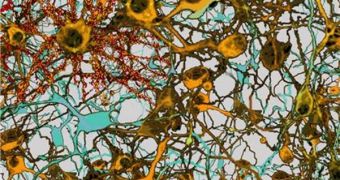The foundation of our ability to process data, think and learn is made up of our synapses, the connections that form between two nerve cells (neurons). These connections exhibit a wonderful and mysterious property called plasticity, which allows them to change considerably over very short periods of time. This type of ability is the target of the EU-funded Novel Brain Inspired Learning Paradigms for Large-Scale Neuronal Networks project, also known as Brain-i-Nets. The work has been coordinated by the Graz University of Technology (GUT) Institute for Theoretical Science (IGI) for the past three years, AlphaGalileo reports.
The stated goal of the Brain-i-Nets initiative is the development of a new type of neuro-computer, one that would possess not only the capability to calculate vast amounts of data, but also the power to think for itself, and learn from its experiences. In other words, researchers seek to mimic the calculation and learning mechanisms found in the brain, and to gain new insight into how our brains work at the same time. A collaboration of neuroscientists and physicists are currently working together to produce viable data on synapse plasticity that would set the foundation for the neuro-computers.
“In contrast to today’s computers, the brain doesn’t carry out a set program, but rather is always adapting functions and reprogramming them anew. Many of these effects have not been explained,” Wolfgang Maass, who is the leader of IGI, alongside colleague and project coordinator Robert Legenstein, explains. They reveal that the work is being funded through the “Future Emerging Technologies” (FET) EU program, which deals especially with supporting prospective advancements in information technology.
The project will receive over 2.6 million euros in funding over the next three years, and partners include the University College London, the Ecole Polytechnique Federale de Lausanne, the French Centre National de la Recherche Scientifique, the Ruprecht-Karls-Universitat Heidelberg and the University of Zurich, in Switzerland.
Scientists have been working on modeling various aspects of the human brain for a long time, but their research has revealed that not even the most powerful supercomputers can, at this point, approach the level of complexity in applications that our brains possess naturally, without any exercise. Scientists have attempted to recreate the processes going on inside specific areas of interest in the cortex, but modern technology only supports modeling very small regions of the brain, so progress has been slow.

 14 DAY TRIAL //
14 DAY TRIAL //